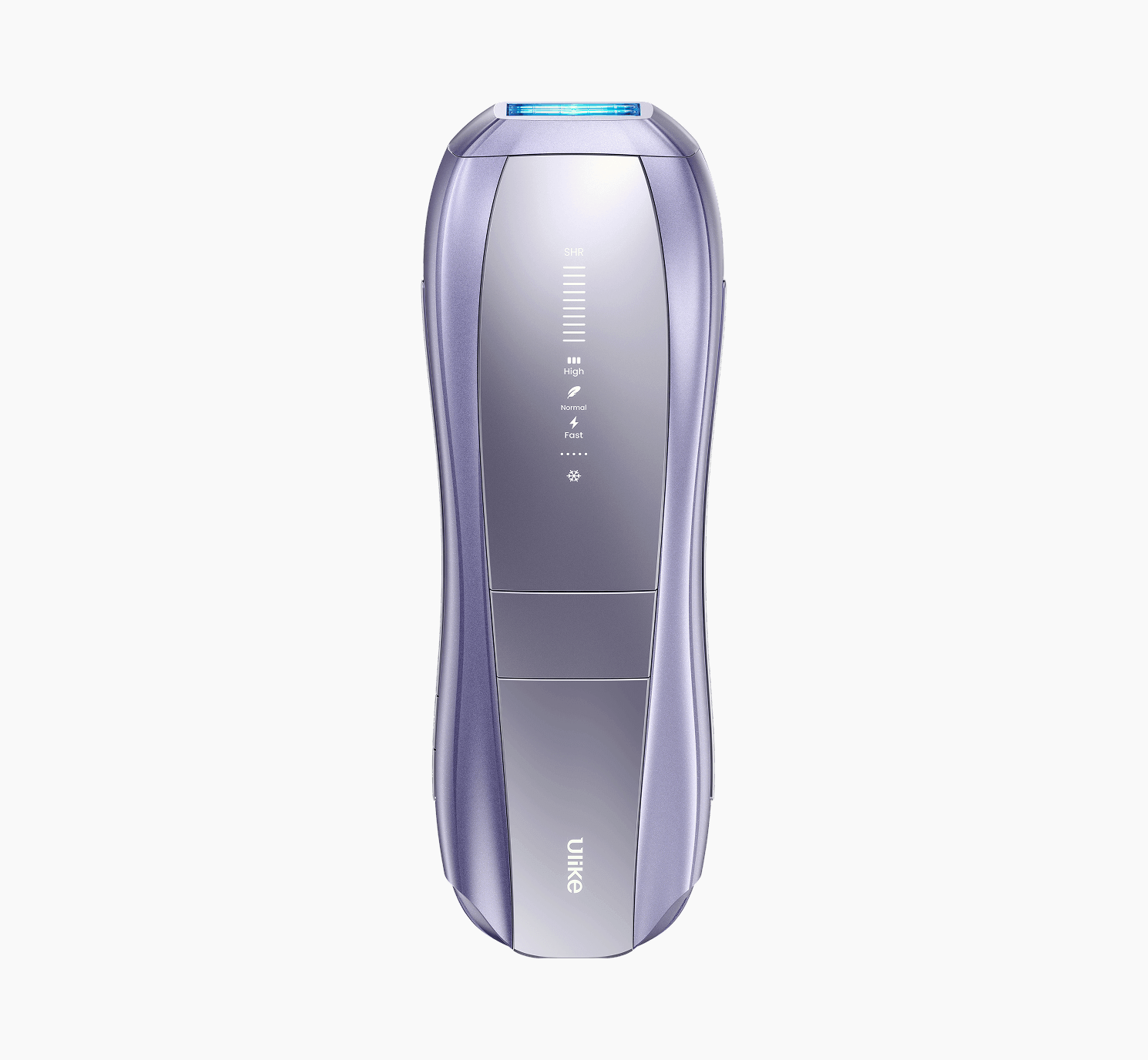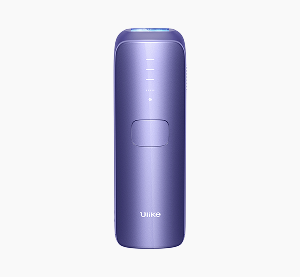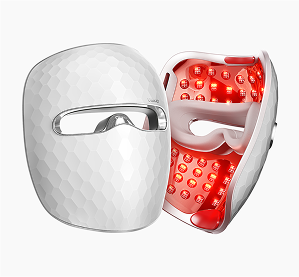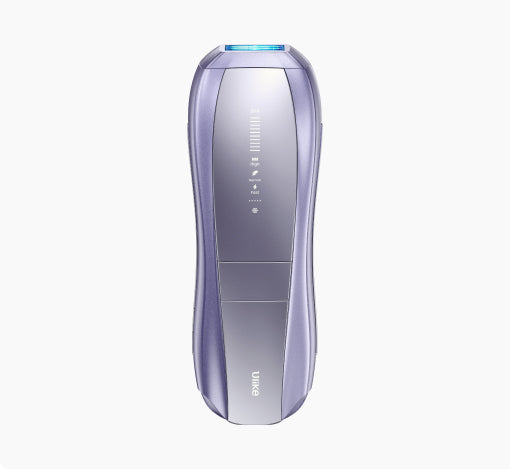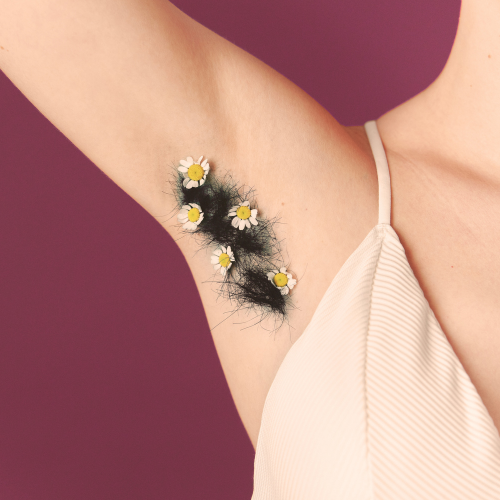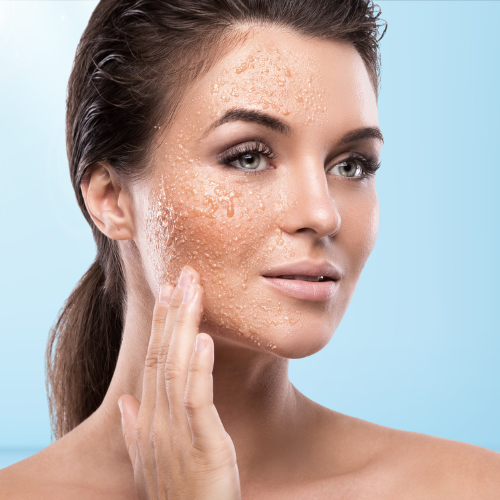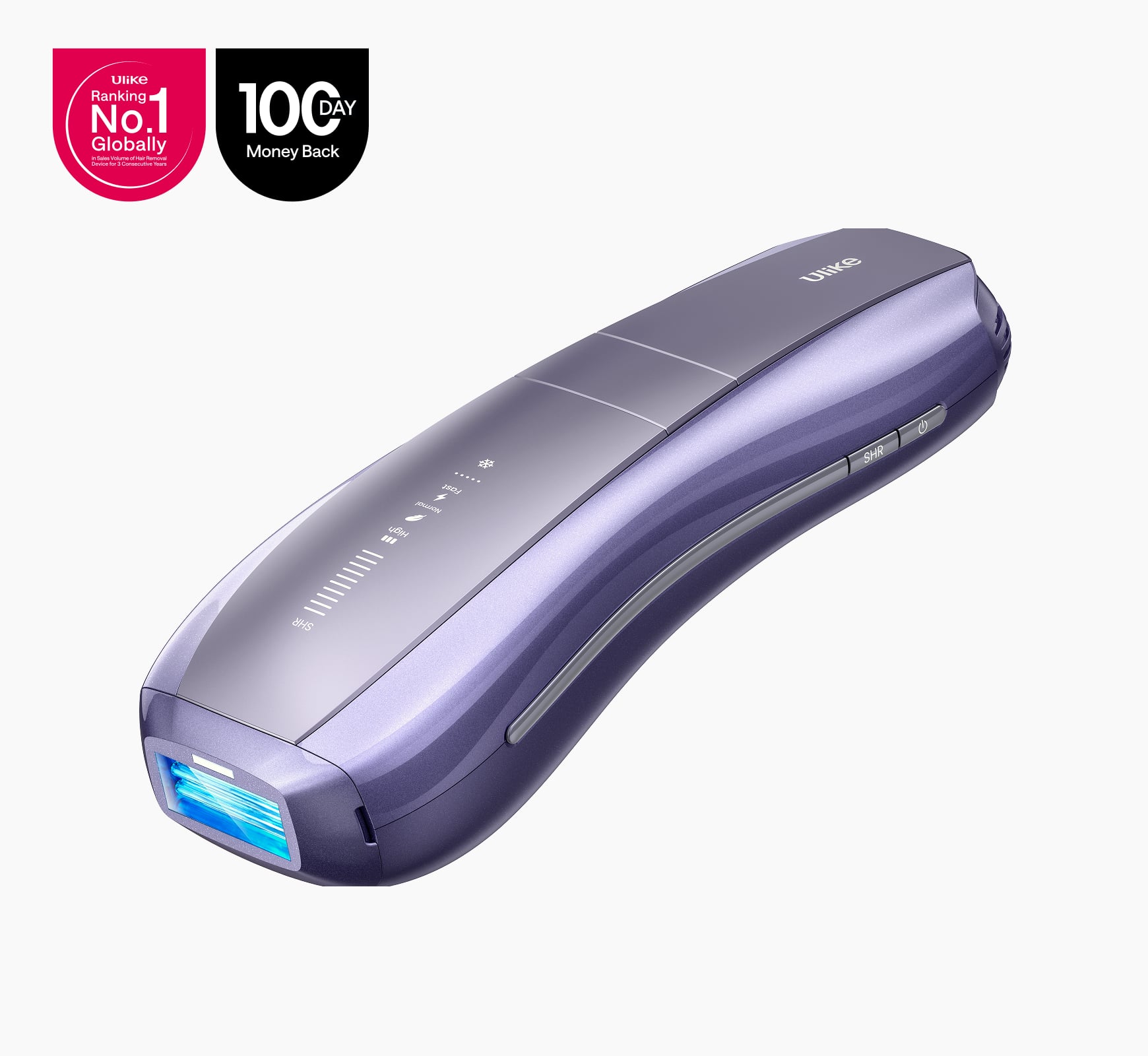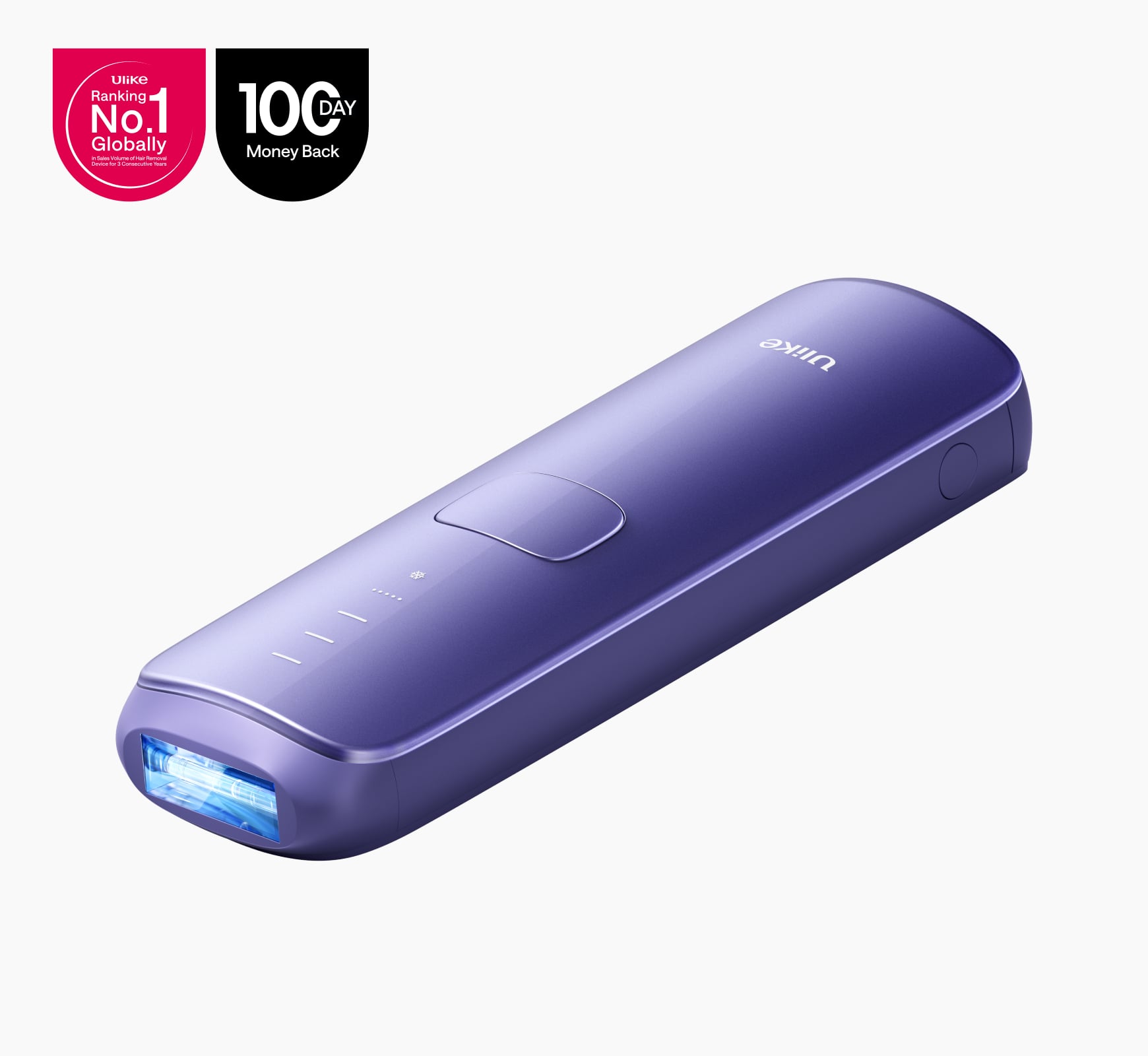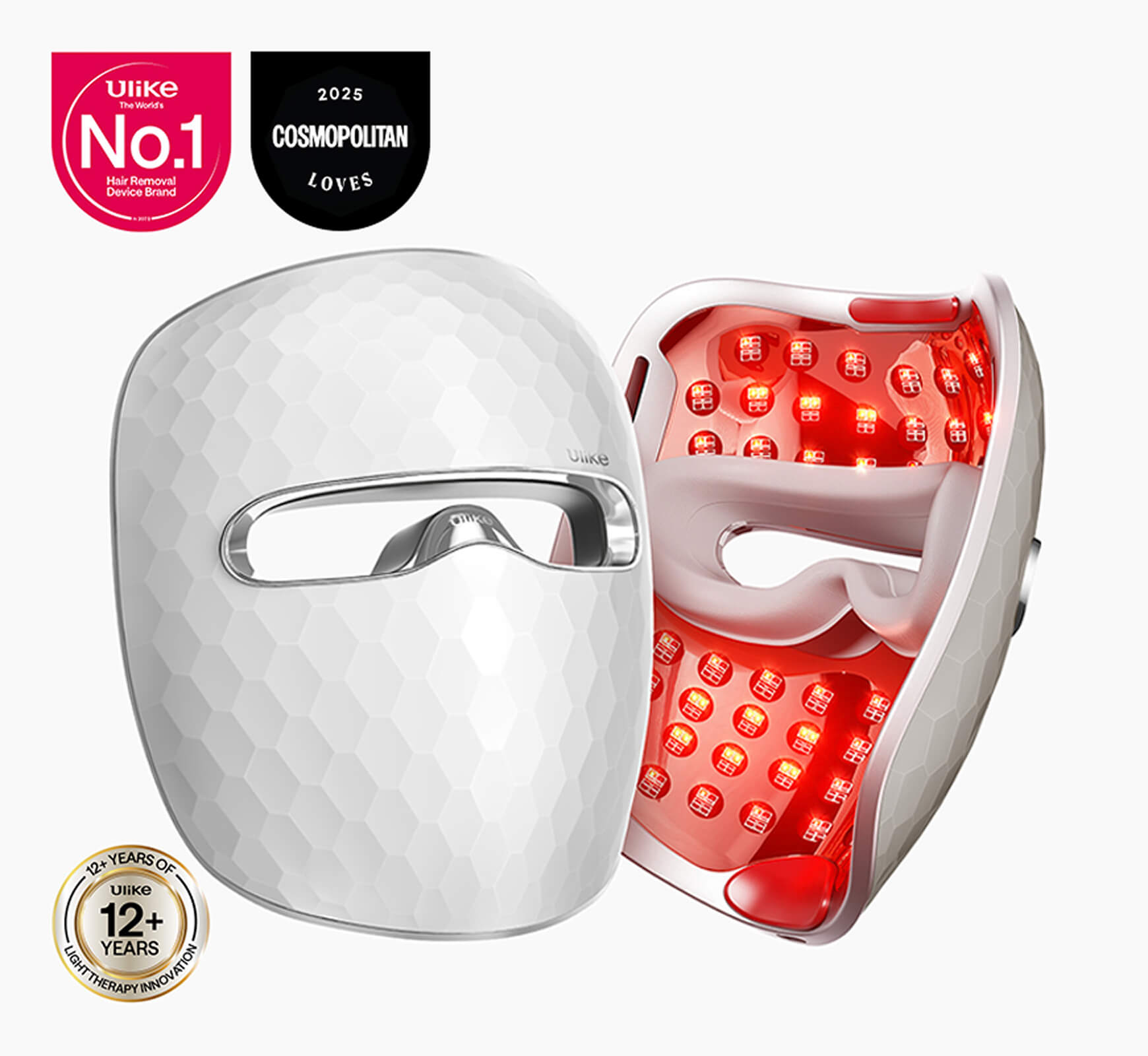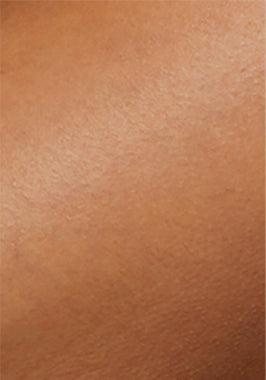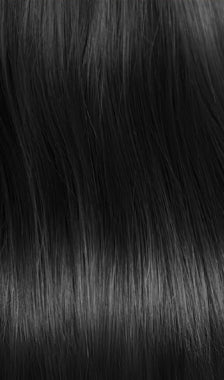Which Hair Removal Method is Best for You? Complete UK Guide 2025
Tired of juggling endless razors, painful waxing strips, or confusing salon menus? You're not alone. In 2025, UK women will be faced with more hair removal methods than ever before, from traditional shaving to cutting-edge laser technology. But choosing the wrong method can lead to wasted money, skin irritation, or disappointing results.
The hair removal industry has evolved dramatically, with new at-home devices now rivalling professional treatments, and innovative techniques gaining popularity across the UK. From London’s high-end clinics to accessible high-street options, the choices can feel downright overwhelming. Whether you're dealing with sensitive skin, coarse hair, or simply want longer-lasting results, finding the right hair removal method is all about understanding your options.
This comprehensive guide cuts through the confusion by reviewing every major hair removal method available in 2025, with UK-specific costs, safety considerations, and effectiveness ratings. You’ll discover how professional laser hair removal compares with at-home IPL devices, which methods work best for different skin types, and how to calculate the long-term value for money.
Hair Removal Methods Cost Comparison 2025: Which is Cheapest?
Choosing the right hair removal method starts with understanding your options. Here's a comprehensive comparison of the top hair removal methods available in the UK in 2025:
| Method | Pain Level (1–5) | Duration of Results | UK Cost (per session) | Best For | Skin Type Suitability |
|---|---|---|---|---|---|
| Shaving | 1 | 1–3 days | £5–£10 (supplies) | Legs, underarms, quick touch-ups | All skin types |
| Waxing | 4 | 3–6 weeks | £15–£80 (salon) | Bikini area, legs, eyebrows | Not recommended for very sensitive |
| IPL (At-Home) | 2 | 2-4 weeks | £200–£400 (device) | All areas, long-term with less maintenance | Light to medium skin tones |
| Laser (Professional) | 3 | Permanent reduction | £100–£400 (per area) | All areas, long-term results | All skin types (with proper assessment) |
| Electrolysis | 5 | Permanent | £30–£100 (per hour) | Small areas, precision work | All skin types and hair colours |
| Epilating | 4 | 2–4 weeks | £20–£150 (device) | Legs, arms, budget-conscious | Normal to less sensitive skin |
| Threading | 3 | 2–4 weeks | £8–£25 (session) | Eyebrows, facial hair | All skin types, especially sensitive |
| Sugaring | 2 | 3–5 weeks | £20–£60 (session) | Sensitive areas, natural preference | All skin types, especially sensitive |
This table provides at-a-glance comparison to help you quickly identify which hair removal methods align with your pain tolerance, budget, and desired results duration.
Best Hair Removal Methods 2025: Shaving vs Waxing vs Laser vs IPL

Is Shaving the Best Hair Removal Method for Beginners?
How It Works: Shaving cuts hair at the skin’s surface using razor blades. This temporary hair removal method requires minimal preparation and delivers immediate results, making it the most accessible option for UK women seeking quick smoothness.
Pros: Shaving provides instant results with zero pain, making it perfect for last-minute preparations or daily maintenance routines. It’s incredibly budget-friendly, with quality razors and shaving products readily available at UK retailers like Boots, Superdrug, and Tesco.
No special skills or techniques are required, making shaving ideal for beginners. You can shave anywhere, anytime, with complete privacy and convenience. Modern razors feature multiple blades and moisturising strips, reducing irritation while providing a close shave.
Cons: The main drawback of shaving is its temporary nature, with hair regrowing within 1-3 days and often appearing as stubble. Regular shaving can cause skin irritation, including razor burn, nicks, and cuts, particularly in sensitive areas.
Without proper technique and quality products, you risk developing ingrown hairs, especially in areas like the bikini line. The ongoing cost of replacement blades and shaving products can accumulate over time.
UK Cost Breakdown
- Disposable Razors: £3-£15 (brands like Gillette Venus, Wilkinson Sword)
- Quality Shaving Cream or Gel: £2-£8 (Nivea, Gillette, or sensitive skin formulas)
- Replacement Razor Heads: £10-£20 for a 4-pack
- Annual Cost Estimate: £60-£120 for regular shavers
Best For: Shaving is an excellent choice for beginners and those with sensitive skin who want to avoid pain. It’s the ideal hair removal method for legs, underarms, and quick touch-ups before social events. Shaving is perfect for busy lifestyles, delivering immediate results without the need for salon appointments or advance planning
How Much Does Professional Waxing Cost in the UK?
How It Works: Waxing removes hair from the root using heated wax or cold wax strips that adhere to the hair before being quickly pulled away. This process disrupts the hair growth cycle, resulting in significantly slower regrowth and progressively finer hair texture over time.
Pros: Waxing provides 3-6 weeks of smooth skin, making it one of the most effective temporary hair removal methods available. With regular waxing sessions, hair follicles weaken, causing regrowth to become finer, softer, and less dense. The process also offers gentle exfoliation, revealing smoother skin texture. Professional waxing ensures precise hair removal and proper aftercare, while at-home options offer convenience and privacy.
Cons: Waxing rates high on the pain scale (4/5), particularly in sensitive areas like the bikini line or underarms. It commonly causes temporary redness and can lead to ingrown hairs, especially for those with curly hair or without proper exfoliation routines. Professional waxing sessions can become expensive with regular appointments, and timing is crucial as hair must be at least 5mm long for effective removal.
UK Cost Breakdown
- Professional Salon Waxing: £15-£80 depending on the area (eyebrows £15, full legs £50-£80)
- At-Home Wax Kits: £5-£25 (Veet, Nair, or salon-quality brands)
- Professional Bikini Wax: £25-£45
- Annual Cost for Regular Professional Waxing: £400-£1,200
Best For: Waxing excels for those seeking longer-lasting results and who are willing to tolerate short-term discomfort. It’s particularly effective for bikini areas, eyebrows requiring precise shaping, and legs where smoothness duration matters more than immediate comfort. This hair removal method suits people with regular schedules who can plan appointments and maintain consistent timing.
Laser Hair Removal Cost UK: Is It Worth the Investment?
How It Works: Laser hair removal uses concentrated light beams to target melanin in hair follicles, converting light energy into heat that damages the follicle and prevents future growth. The process requires multiple sessions (typically 6-8) to target follicles during their active growth phase, resulting in permanent hair reduction of 80-90%.
Pros: Laser hair removal offers the closest thing to permanent results among all hair removal methods, with most clients experiencing dramatic hair reduction lasting for years. The precision targeting means minimal damage to the surrounding skin, and the gradual reduction in hair density significantly decreases ingrown hairs over time. Professional laser treatments in the UK use advanced cooling technology, making sessions more comfortable than traditional methods.
Cons: The primary barrier is the substantial upfront investment, with full treatment courses costing £600-£3,200 depending on the areas treated. Multiple sessions are essential, requiring 6-8 appointments spaced 4-8 weeks apart. Traditional lasers work best on dark hair and light skin, though newer technology has expanded the suitability to a wider range of skin types. Some discomfort occurs during treatment, described as rubber band snapping sensations, and temporary redness may follow sessions.
UK Cost Breakdown
Per Session Costs: £100-£400+ (varies by clinic reputation and location)
Popular UK Clinic Chains: SK:N (£100-£250), Pulse Light Clinic (£80-£200)
Package Deals: Most clinics offer 6-8 session packages with 10-20% discounts
Small Areas (Upper Lip): £60-£120 per session
Large Areas (Full Legs): £200-£400 per session
Best For: Laser hair removal suits those seeking long-term solutions and who are willing to invest upfront for permanent results. It is most effective for people with dark hair on light to medium skin tones, though newer diode and Nd:YAG lasers accommodate darker skin types safely. This method is ideal for busy professionals wanting to eliminate ongoing hair removal maintenance.
At-Home IPL Devices: Do They Really Work?
How It Works: IPL (Intense Pulsed Light) uses broad-spectrum light rather than focused laser beams to target hair follicles. The light energy converts to heat within the follicle, gradually weakening it over multiple treatments. While less precise than laser technology, IPL offers versatility for both professional and at-home hair removal methods.
Pros: At-home IPL devices like Ulike Air 10, Philips Lumea, and Braun Silk Expert Pro bring professional-style hair removal methods straight into your home, offering convenience and privacy. IPL treatments are generally gentler than professional lasers, rating around 2/5 for pain, with built-in skin tone sensors ensuring safety. The technology works effectively on larger body areas, making full-leg or arm treatments practical and cost-effective in the long term.
Cons: IPL requires more sessions than professional laser treatment, typically 8-12 initial treatments followed by monthly maintenance. Results vary significantly based on skin tone and hair colour, with limited effectiveness on very dark skin or light/grey hair. Consistency is crucial for success, and skipping sessions can diminish results. Home devices require careful technique and skin preparation for optimal safety and effectiveness.
UK Cost Breakdown
Professional IPL Sessions: £50-£200 per treatment at clinics
High-Quality Home Devices: £200-£500 (Philips Lumea Prestige £400, Braun Silk Expert Pro £300)
Device Lifespan: 300,000-400,000 flashes (equivalent to 20+ years of use)
Annual Maintenance Cost: Minimal after initial device purchase
Best For: IPL excels at treating larger body areas and suits anyone preferring at-home hair removal methods over salon visits. It’s perfect for maintaining results after professional laser courses or for those wanting gradual, gentle hair reduction. IPL is ideal for people with light to medium skin tones and dark to medium hair colours seeking convenient, long-term solutions.
Threading vs Waxing: Which is Better for Eyebrows?
How It Works: Threading employs twisted cotton thread, manipulated by skilled technicians to trap and remove individual hairs from the follicle. This ancient technique requires no chemicals or heat, relying purely on precise hand movements to achieve clean, defined hair removal patterns.
Pros Threading offers unmatched precision for facial hair removal, creating clean eyebrow shapes and removing unwanted facial hair with accuracy that other methods simply can't match. The chemical-free process is ideal for sensitive facial skin, avoiding reactions that are common with wax or depilatory creams. Sessions are quick (10-15 minutes), and results last 2-4 weeks. Many UK threading specialists can create intricate eyebrow designs and perfectly shaped facial hair patterns.
Cons: Threading works effectively only on small, relatively flat areas, making it impractical for body hair removal. The technique requires considerable skill, making DIY threading challenging for most people. Some discomfort occurs during the process, though it's less intense than waxing. Finding skilled threading specialists can be difficult outside major UK cities, and the quality of service can vary significantly between practitioners.
UK Cost Breakdown
- Professional Eyebrow Threading: £8-£15 in most UK salons
- Upper Lip Threading: £5-£12
- Combination Services: £15-£25 for multiple facial areas
- Threading Thread for DIY: Under £5, but requires significant practice
Best For Threading excels at precise eyebrow shaping and facial hair removal, particularly for those with sensitive skin who react poorly to wax or chemicals. It’s perfect for maintaining defined eyebrow shapes and removing unwanted upper lip or chin hair. Ideal for people seeking natural, chemical-free hair removal methods for facial areas.
What is Sugaring? Natural Hair Removal Method Explained
How It Works: Sugaring uses a paste made from sugar, lemon juice, and water to remove hair from the root. Unlike wax, sugar paste is applied against hair growth and removed in the direction of growth, reducing breakage and minimising discomfort while effectively removing hair from the follicle.
Pros: Sugaring uses completely natural ingredients, making it ideal for sensitive skin and those preferring organic hair removal methods. The technique is less painful than traditional waxing because hair removes in its natural growth direction, reducing breakage and follicle trauma. Sugar paste is water-soluble, making cleanup effortless compared to sticky wax residue. Regular sugaring sessions result in progressively finer, sparser hair regrowth.
Cons: Sugaring availability remains limited across the UK, with fewer salons offering this service compared to traditional waxing. Results depend heavily on practitioner technique, and DIY consistency can be challenging to achieve. Weather conditions affect paste texture – humidity and cold can make sugar paste difficult to work with effectively. The technique requires specific skill sets that not all beauty therapists possess.
UK Cost Breakdown
- Professional sugaring sessions: £20-£60 per area depending on location and salon
- DIY sugar paste ingredients: Under £5 for multiple applications
- Specialist sugaring salons: £25-£45 for bikini areas, £35-£65 for full legs
- Annual cost for regular sessions: £300-£800 depending on frequency and areas treated
Best For: Sugaring suits UK women seeking natural, gentle hair removal methods for sensitive areas including face, underarms, and bikini line. Perfect for those with sensitive skin who experience irritation from traditional wax or chemicals. Ideal for environmentally conscious individuals preferring sustainable, natural beauty practices with effective results lasting 3-5 weeks.

Which Hair Removal Method is Best for Sensitive Skin?
Selecting the right hair removal method requires understanding how your skin type and hair characteristics affect treatment success and safety. UK women’s diverse skin tones and hair textures demand personalised approaches to achieve optimal results while minimising irritation and complications.
Best Hair Removal for Sensitive Skin: Safe Options
Recommended Methods: For sensitive skin, gentle shaving with high-quality, sharp razors and hypoallergenic shaving cream minimises irritation while providing effective hair removal. Threading offers precision for facial areas without chemicals or heat that might trigger reactions. Sugaring provides natural hair removal with ingredients less likely to cause allergic responses compared to synthetic wax formulations.
Methods to Avoid: Harsh strip waxes containing synthetic fragrances or chemicals can cause severe reactions on sensitive skin. Frequent epilating may lead to persistent redness, bumps, and inflammation. Chemical depilatory creams often contain strong alkaline ingredients that can burn or irritate delicate skin, particularly in intimate areas.
Special Care Requirements: Always perform patch tests 24-48 hours before trying new hair removal methods or products. Establish consistent post-treatment routines using fragrance-free moisturisers, aloe vera gel, or specialised aftercare products. Avoid sun exposure immediately after hair removal, and consider timing treatments to avoid hormonal sensitivity periods.
Fine Hair vs Coarse Hair: Which Removal Method Works Best?
Fine Hair Challenges: Fine, light-coloured hair contains minimal melanin, making IPL and laser hair removal methods less effective. Threading becomes the preferred option for fine facial hair, offering precision removal that light-based treatments can’t match. Multiple IPL sessions may be required for noticeable results, making cost-effectiveness questionable for fine hair types.
Coarse Hair Advantages: Coarse, dark hair responds exceptionally well to laser hair removal due to its high melanin content, allowing for efficient light absorption and precise follicle targeting. Waxing also works excellently on coarse hair, removing thick strands cleanly from the root and providing long-lasting smoothness. The substantial hair structure makes removal more straightforward across all mechanical methods.
Curly Hair Considerations: Curly and coarse hair types are particularly prone to ingrown hairs with any hair removal method that cuts or breaks hair below the skin level. Sugaring and laser treatments prove most effective because they either remove hair in the growth direction or eliminate follicles entirely. Prioritise consistent exfoliation routines using gentle scrubs or chemical exfoliants, and consider professional extraction treatments for persistent ingrown hairs.
Laser Hair Removal on Dark Skin: Is It Safe?
Darker Skin Tone Options: Traditional IPL and older laser technologies pose risks for darker skin tones, potentially causing burns, hyperpigmentation, or permanent discolouration. Modern Nd:YAG lasers, specifically designed for melanin-rich skin, safely bypass surface pigmentation to target hair follicles effectively. A professional assessment at reputable UK clinics ensures appropriate technology selection and safe treatment parameters.
Lighter Skin Tone Advantages: Most hair removal methods work safely and effectively on lighter skin tones, with IPL and traditional laser treatments showing optimal results. The contrast between light skin and darker hair creates ideal conditions for light-based hair removal methods, maximising effectiveness while minimising safety concerns.
2025 Technology Advances: Latest-generation devices feature improved skin tone sensors, broader wavelength ranges, and enhanced cooling systems, making treatments safer across diverse skin types. Many UK clinics now offer consultations using advanced skin analysis technology to determine optimal treatment approaches. Newer diode lasers and sophisticated IPL devices provide expanded suitability ranges, accommodating previously difficult-to-treat combinations of skin and hair colours.

Cheapest Hair Removal Method: 5-Year Cost Analysis
Understanding the true cost of different hair removal methods requires analysing both immediate expenses and long-term financial implications. This comprehensive breakdown helps UK women make informed decisions based on their budget and desired outcomes.
How Much Do You Really Spend on Hair Removal?
Shaving represents the lowest initial investment at £5-£15 monthly for quality razors, replacement heads, and shaving products from UK retailers. Professional waxing sessions range from £15-£80 per appointment, depending on the areas treated and salon location. At-home IPL devices require a substantial upfront investment of £200-£500 but eliminate per-session costs immediately.
Professional laser hair removal demands the highest initial commitment, with single sessions costing £100-£400+ depending on the treatment area and clinic reputation. However, package deals typically reduce per-session costs by 15-25%, making comprehensive treatment plans more affordable than individual appointments.
Hair Removal Cost Calculator: 5-Year Savings Guide
- Shaving : £300-£900 over five years (£5-£15 monthly for supplies)
- Professional Waxing: £900-£3,000 (salon visits every 4-6 weeks)
- At-Home Waxing: £300-£900 (kit purchases and replacement supplies)
- Professional Laser: £1,200-£3,200 (complete 6-8 session course)
- At-Home IPL: £200-£500 (device purchase plus minimal maintenance)

5 Key Factors That Determine How Long Your Bikini Wax Lasts
Selecting the optimal hair removal method requires evaluating multiple personal factors to ensure the best match for your individual needs, preferences, and circumstances.
Budget-Friendly Hair Removal: Cheap vs Expensive Options
Initial Investment vs Ongoing Costs
While laser hair removal requires a substantial upfront investment (£1,200-£3,200 for complete treatment), it eliminates ongoing expenses that accumulate with temporary methods. Calculate 5-year total costs, including time value, to determine true affordability. Consider clinic financing options or package payment plans to make professional treatments more accessible.
Hidden Cost Awareness
Factor in aftercare products, travel to appointments, time off work for professional treatments, and potential touch-up sessions. At-home devices may require replacement parts or upgrades, adding to the overall cost.
Pain Tolerance Assessment
Gradual Tolerance Building
If pain sensitivity concerns you, start with gentler methods like shaving or depilatory creams, then progress to threading or sugaring before considering more intense options. Many people find that pain tolerance increases with regular treatments as the skin adapts and hair becomes finer.
Comfort-Focused Alternatives
For those seeking longer-lasting results without significant discomfort, at-home IPL devices offer gentle yet effective hair removal. Professional laser treatments with cooling technology provide powerful results with manageable sensation levels compared to waxing or epilating.
Lifestyle and Time Factors
Busy Schedule Solutions
For demanding lifestyles, prioritise methods requiring minimal time investment. Professional laser treatments eliminate daily routines after completion, while at-home IPL devices offer flexible scheduling. Quick touch-up methods like shaving provide immediate results for unexpected situations.
Travel and Convenience Needs
Frequent travellers benefit from portable solutions like epilators or small razors. Permanent hair reduction methods eliminate vacation hair removal concerns entirely. Consider how different methods impact your spontaneity and lifestyle flexibility.
Skin Sensitivity and Hair Type Matching
Personalised Method Selection
Sensitive skin requires gentle approaches like sugaring, threading, or high-quality shaving with proper aftercare. Coarse, dark hair responds excellently to laser treatments and waxing, while fine hair may require threading or mechanical removal methods for effective results.
Professional Consultation Value
Reputable UK clinics offer comprehensive skin and hair analysis to recommend optimal treatment approaches. A professional assessment prevents costly mistakes and ensures safety, particularly for light-based treatments that require proper skin tone evaluation.
Treatment Area Considerations
Area-Specific Optimisation
Different body areas require specialised approaches for optimal results. Facial hair benefits from precision methods like threading or targeted laser treatments. Large areas like legs favour efficient options such as waxing, IPL, or professional laser sessions. Sensitive intimate areas require gentle methods with proven safety records.
Combination Approach Benefits
Many women successfully combine different hair removal methods for various body areas, using threading for eyebrows, laser for legs, and gentle shaving for quick touch-ups. This strategic approach maximises effectiveness while managing costs and comfort levels across different body zones.

Frequently Asked Questions About Hair Removal Methods
Can you mix different hair removal methods on the same day?
It's generally not recommended to combine multiple hair removal methods on the same area within 24-48 hours, as this can cause severe skin irritation, inflammation, or chemical burns. However, you can safely use different methods on separate body areas simultaneously - for example, threading your eyebrows and shaving your legs on the same day. If you're transitioning between methods, wait at least 48 hours between treatments and always patch test new products. The exception is gentle moisturising or soothing treatments, which should be applied immediately after any hair removal method.
How long should you wait between laser hair removal sessions and other methods?
Professional laser clinics typically advise avoiding all other hair removal methods that remove hair from the root (waxing, threading, epilating, sugaring) for 4-6 weeks before and throughout your laser treatment course. These methods interfere with the laser's ability to target hair follicles effectively. Shaving is actually encouraged between laser sessions as it removes visible hair while leaving the root intact for the laser to target. After completing your laser course, you can resume other methods for any remaining hair, but many clients find this unnecessary due to the dramatic hair reduction achieved.
What should you do if you have an allergic reaction to hair removal products?
Stop using the product immediately and rinse the affected area with cool water for at least 10 minutes to remove any remaining chemicals. Apply a cold compress and take an antihistamine if available. For severe reactions involving widespread redness, blistering, difficulty breathing, or swelling of face/throat, seek emergency medical attention immediately. For mild reactions, apply aloe vera gel or fragrance-free moisturiser and avoid sun exposure, tight clothing, or further irritation. Contact your GP if symptoms worsen or don't improve within 24-48 hours. Always patch test new products 48 hours before full application, especially if you have sensitive skin or known allergies.
Is it normal for hair to grow back thicker after certain removal methods?
This is a common myth - hair removal methods cannot actually change your hair's thickness, colour, or growth rate permanently. When you shave, the blunt cut end of the hair may feel coarser as it grows back, creating the illusion of thicker hair. Waxing, epilating, and other root-removal methods typically cause hair to grow back finer over time as repeated trauma weakens the follicle. Only hormonal changes, genetics, medications, or underlying medical conditions can alter your natural hair characteristics. If you notice genuinely thicker or darker hair growth in new areas, particularly on the face, consult your GP as this could indicate hormonal imbalances requiring medical attention.
Can pregnancy affect which hair removal methods are safe to use?
Pregnancy hormones often increase hair growth and skin sensitivity, making method selection crucial for safety. Shaving, threading, and sugaring are generally considered safe throughout pregnancy. Professional waxing is typically safe but may be more painful due to increased sensitivity. Most professionals recommend avoiding laser hair removal and IPL during pregnancy as a precaution, though there's no evidence of harm - it's simply that safety data during pregnancy is limited. Electrolysis opinions vary, so consult your midwife or GP. Chemical depilatories should be used with extra caution due to increased skin absorption during pregnancy. Always inform beauty therapists about your pregnancy, as they may adjust techniques or products for your safety and comfort.
Conclusion: Finding the Best Hair Removal Solution for You
Choosing the best hair removal method depends on personal factors such as budget, pain tolerance, lifestyle, and skin/hair type. While there’s no universal solution, finding the right method tailored to your needs ensures optimal results. Professional treatments like laser hair removal offer long-term value, though they require a higher upfront investment. For those seeking more affordable options, quality shaving or at-home IPL devices can provide effective results without breaking the bank.
Ultimately, personalisation is key. Match methods to your skin sensitivity and hair type, and consider your lifestyle. Whether you prefer the convenience of professional treatments or the control of at-home devices, there's a perfect option for every woman. Use this guide to explore your choices, book consultations with reputable UK clinics, or refine your current routine to find the method that works best for you.
The perfect hair removal method exists for every woman. Use this guide to find yours and enjoy the confidence that comes with smooth, beautiful skin achieved your way.
Looking for specific product recommendations or need help choosing between professional clinics or at-home treatment? Explore our detailed reviews of top-rated at-home hair removal devices.

